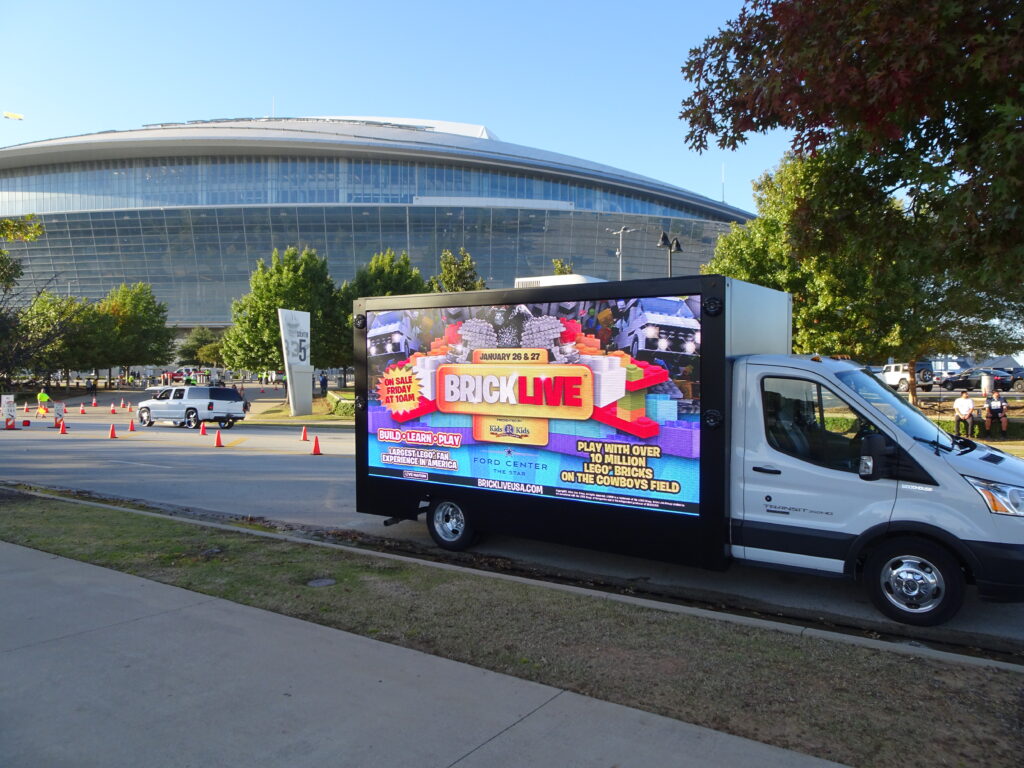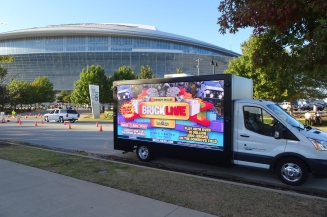Understanding the Cost of Mobile Billboard Advertising Trucks

In the ever-evolving landscape of advertising, businesses are constantly seeking innovative ways to capture the attention of their target audience. Mobile billboard advertising, also known as truck advertising or rolling advertising, has emerged as a prominent and effective strategy in the marketing world. This form of advertising involves displaying ads on trucks, trailers, or other vehicles that traverse designated routes, ensuring exposure to diverse demographics. However, before delving into the realm of mobile billboard advertising, it’s crucial to understand its costs and how they impact overall campaign effectiveness.
Mobile Billboard Advertising
Mobile billboard advertising offers several distinct advantages over traditional static billboards. Unlike stationary billboards, mobile billboards can reach a wider audience by strategically navigating high-traffic areas and target specific demographics or events. This dynamic approach enables advertisers to maximize exposure and engagement with potential customers.
Factors Influencing Mobile Billboard Advertising Costs
Several factors contribute to the overall cost of mobile billboard advertising. Understanding these factors is essential for businesses to budget effectively and optimize their advertising strategies.
Location:
The geographic area covered by the mobile billboard significantly influences the cost. Advertising in densely populated urban centers or high-traffic tourist destinations typically commands higher rates due to increased exposure.
Duration of Campaign:
The duration of the advertising campaign plays a crucial role in determining costs. Longer campaigns generally offer better value for money, as advertisers can negotiate discounted rates for extended periods of exposure.
Vehicle Type and Size:
The type and size of the vehicle used for mobile billboard advertising affect pricing. Larger vehicles with more prominent display areas may incur higher costs but can attract greater attention from viewers.
Time of Day:
Peak hours or specific times of day when traffic is highest often incur higher rates. Advertisers can choose to target these times for maximum impact but should be prepared to pay accordingly.
Design and Production:
The design and production of the advertisement itself represent an additional cost. High-quality graphics and compelling messaging are essential for capturing audience attention and driving engagement.
Route Selection:
The routes chosen for the mobile billboard route significantly impact costs. Routes with higher traffic volume or strategic proximity to target demographics may command premium rates.
Special Events or Seasons:
Advertising during special events or peak seasons may entail higher costs due to increased demand. Advertisers targeting specific events or holidays should factor in these fluctuations when budgeting for their campaigns.
How Much Would A Mobile Billboard Cost Me?
The cost of a mobile billboard typically ranges from 0.48¢ to 0.77¢ per 1,000 views, depending on factors like design, duration, and type of billboard. For a pair of billboards on a truck, design costs range from $1,200 to $1,600, with daily vehicle rental prices averaging $500 to $800. Static billboards start around $24,000, while digital ones can exceed $100,000. Renting a mobile billboard by the hour, typically for 6 to 10 hours a day, is another option. Despite initial expenses, mobile billboards offer superior value and ROI compared to alternative marketing strategies.
Cost Comparison with Other Advertising Channels
While mobile billboard advertising offers unique advantages, it’s essential to compare its costs with other advertising channels to gauge its effectiveness and value proposition.
Traditional Billboards:
Mobile billboards often offer better value for money compared to traditional static billboards. With the ability to target multiple locations and demographics, mobile billboards can provide superior ROI for advertisers.
Digital Advertising:
Digital advertising platforms such as social media, search engine marketing, and display ads offer precise targeting capabilities but may lack the physical presence and impact of mobile billboards. However, digital advertising often provides more comprehensive analytics and tracking options.
Television and Radio:
Television and radio advertising can reach large audiences but are generally more expensive and less targeted than mobile billboards. Mobile billboards offer a cost-effective alternative for businesses seeking localized or niche marketing campaigns.
Print Media:
Print advertising in newspapers, magazines, or brochures may offer targeted reach but lacks the dynamic presence of mobile billboards. Mobile billboards provide greater flexibility and visibility, especially in outdoor environments.
Strategies for Cost Optimization
To maximize the effectiveness of mobile billboard advertising while minimizing costs, businesses can adopt several strategies:
Plan Campaigns in Advance:
Booking campaigns well in advance allows advertisers to secure favorable rates and negotiate discounts with mobile billboard operators.
Optimize Route Selection:
Carefully selecting routes that align with target demographics and high-traffic areas can enhance campaign effectiveness while minimizing costs.
Utilize Data and Analytics:
Leveraging data and analytics to track campaign performance enables advertisers to refine their strategies and allocate resources more efficiently.
Focus on Creativity and Impact:
Investing in high-quality design and compelling messaging can enhance the impact of mobile billboard advertising, maximizing ROI despite initial production costs.
Negotiate Contracts:
Negotiating flexible contracts with mobile billboard operators can provide advertisers with greater control over campaign costs and scheduling.
Conclusion
Mobile billboard advertising offers a dynamic and cost-effective solution for businesses seeking to increase brand visibility and engage with their target audience. By understanding the factors influencing costs and implementing strategic optimization strategies, advertisers can leverage mobile billboards to achieve their marketing objectives effectively. With its versatility, reach, and impact, mobile billboard advertising continues to emerge as a valuable tool in the modern advertising landscape.
Back to Blog
